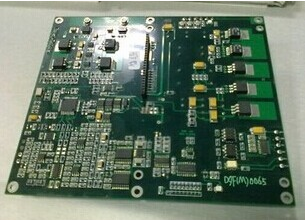The solder used when PCBA components are soldered to the board requires soldering materials to ensure the quality of soldering. After soldering, the soldering material remains on the board surface, forming dirt, and affecting appearance and electrical performance.
It is necessary to use plate washer water for surface cleaning; provide correct guidance and protection for the operating staff to wash the plates to ensure that the customer requirements are met after the plates are washed, and to reduce customer complaints and employee bodily injuries;
PCBA cleaning operations;
Suitable for washing stations and washing after maintenance;
4.1 Tools and materials used in this process
5.1. Preparation before operation
5.1.1 Enter the workshop/post 10 minutes in advance of each shift to participate in morning and evening meetings, and perform self-inspection on the requirements of meeting management personnel, work arrangements and problem points during work;

5.1.2 In the job position, the "handover record sheet" of the shift and the problem points in the face-to-face handover inspection of the shift personnel, and the handover description of the online inspection product status and identification, and the clear inspection work;
5.1.3 Clean the PCBA board after welding OK in accordance with the requirements of the job responsibilities, and pay special attention to the cleaning methods of various components;
5.1.4 In the process of going to work, record the problems that exist in the process at any time, especially the problems and abnormalities that need to be known and coordinated to follow up on the next shift; organize them in the "Post Shift Handover Record Sheet" 1H before leaving get off work;
5.1.5 Wear a mask, gloves and static ring before starting work;
5.2 Operation process and operation method
5.2.1 Manual + brush cleaning method:
5.2.1.1 Pick up the PCB to be washed with one hand and place it on the workbench (when the PCB is placed, it is placed at an angle of 45 to 60 degrees with the workbench, so that the washing sewage can be cleaned out of the PCB after the PCB is washed), and then another Dip with one hand
The anti-static brush with washing water is tilted from top to bottom to scrub in the same direction, and repeat the scrub until the tin slag and flux remaining on the PCB board are scrubbed clean;
"5.2.1.2 After washing, check whether there are residues and stains on the PCB board. If there are residues on the surface, wipe it point-to-point with a dust-free cloth. After confirming that there is no problem, place the PCB board neatly on the electrostatic plate;
5.2.1.2 After the operation is over, properly place the plate washer water and anti-static brush to the designated position, and do a good job of the "5S" work station;
5.2.2 Cleaning method of brush washer:
5.2.2.1 Before washing the plate, confirm that the plate to be washed can be cleaned by this method of plate washing, connect the power supply, and wear a mask for personal protection. When the plate washer is turned on, the power switch on the surface of the brush rotates;
5.2.2.2 Put the plate into the sponge soaked in the plate washer water and stain it with the plate-washing water to decompose the dirt on the plate;
5.2.2.3 Hold the plate soaked in the plate washer water firmly and place it on the brush machine for about 3 seconds, pick up the plate and turn it over to check that the flow that meets the cleaning requirements is in the next station, otherwise repeat steps 2 and 3 again.
When brushing the board, special attention must be paid to holding the board firmly to ensure that the board will not fly out of the hand and break the board during the brushing process;
5.2.2.4 When the job is completed or after get off work, please use a glass plate to cover the plate washer water to reduce volatilization.
5.3 Precautions for plate washing:
5.3.1 Do not wash the speakers, buzzers, sensors, display screens, relays, switches, golden fingers, sockets and other connectors on the board when washing the board, so as to avoid damage to the devices caused by the washing water;
5.3.2 The surface markings of the electrolytic capacitors, communication modules and other components on the board will be washed off when the board is washed. Avoid brushing to cause unrecognition;
"5.3.3 If dirt is found on the anti-static brush during the operation, it needs to be cleaned up in time before it can be used;
"5.3.4 The IC and other soldering positions on the PCB board should be checked for residual tin dross and flux;
5.3.5 If the anti-static brush is found to be depilated, insufficient hardness, etc., it needs to be replaced in time;
5.3.6 During the process of washing the board, it is prohibited to use electrostatic tweezers to pick up a dust-free cloth for wiping, to avoid damage to the chip components due to the front end of the tweezers, causing human defects;
5.3.7 After the PCBA product is cleaned, self-check to confirm whether the barcode and silk screen of the product are erased and blurred, and it is found that the product is regarded as defective.
5.3.8 The plate washing water is flammable and corrosive. The personnel should wear masks for protection and pay attention to the safety of use